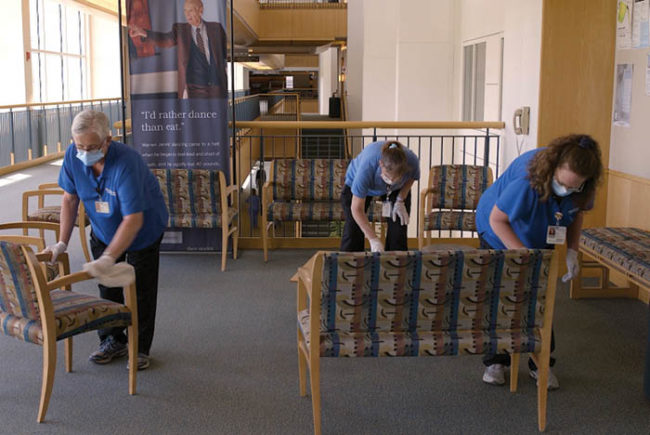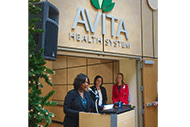Fostering genuine communication was the main topic at Day 2 of the Association for the Health Care Environment’s (AHE) Exchange Conference & Solution Center. Attendees gathered today in San Antonio to hear from award-winning journalist, professional speaker and author of “Heard Mentality” Celeste Headlee.
In her address, “Adding Value through Communication: How to Have Conversations that Matter,” Headlee revealed the No. 1 impediment to communication: A lack of empathy.
According to Headlee, human empathy has decreased 40% over the last 25 years, which has led to breakdowns in communication and trust in personal life and the workplace. Headlee cites an overuse of digital communication among both older and younger generations as a major factor in the decrease of mutual exchanges of ideas.
“It’s a skill that we’re losing because we’re not using it,” she says.
Fortunately, Headlee says there are mindful practices that can help to model better communication:
- Ignore advice that teaches people to pretend they are listening, such as maintaining eye contact and repeating what people say. Listening to understand others will naturally result in these behaviors, Headlee says.
- Do not multitask. Set aside phones and turn away from computer screens when someone is talking.
- Try to find another way to teach someone without lecturing.
- Ask open-ended questions and allow the person to answer however they like.
- Do not vocalize every internal thought that will take a conversation off track.
Headlee says when leaders implement these and other strategies for empathic conversation, employees will begin to follow.
“If you want to improve conversation, you have to improve your own conversational habits, and others will model it,” she says.
Following this morning’s general session, attendees separated into learning labs covering a range of topics.
In “Creating a Culture of Safety in Four (Not so Easy) Steps,” David Feldman, M.D., MBA, CPE, senior vice president and chief medical officer at Hospitals Insurance Co., explained the necessary ingredients to build safety excellence:
- Foster a background of respect.
- Use advanced teamwork tools to build reliable teams.
- Design reliable processes that factor in system design and human factors.
- Building a just culture that encourages reporting and accountability.
As a health care organization works to improve its safety culture, Feldman says it’s important to ensure employees feel safe to admit their own mistakes and report mistakes made by colleagues. One way to do this is to celebrate employees when they speak up. If employees do not feel safe, Feldman says, “Repetitive risky behavior will turn into reckless behavior.”
In another learning lab, “Value Work: From Vision to Implementation,” Dane Falkner, MBA, LSSBB, senior value engineer at the University of Utah Health, and Jessica Rivera, T-CHEST, CMIP, VPEI, environmental services director, University of Utah Health, traced their journey from outsourcing environmental services in eight of its clinics to building a completely in-house operation.
As the team transitioned to an in-house model, Rivera says the department leaders sat down and documented every issue or failure that could possibly occur and devised plans to prevent those events.
The speakers noted that during any process change, it’s important to give every team member a voice.
“Clear roles and responsibilities can really help your organization go in the right direction,” Falkner says.
AHE Exchange will wrap up tomorrow with its “Conference Within a Conference,” a half-day event that will focus on the value of environmental services leadership and maintaining a seat at the table as an authority in health care.




